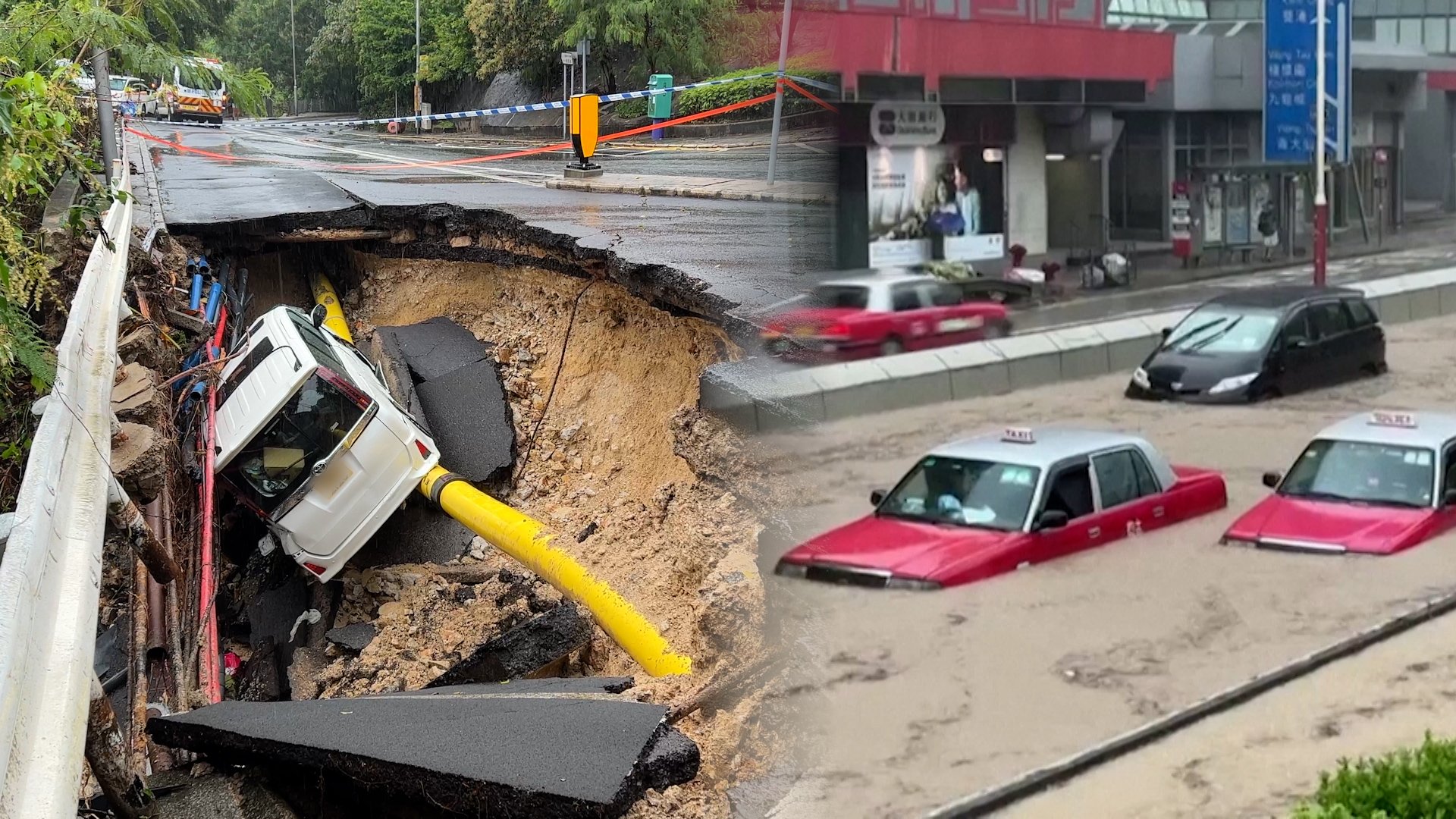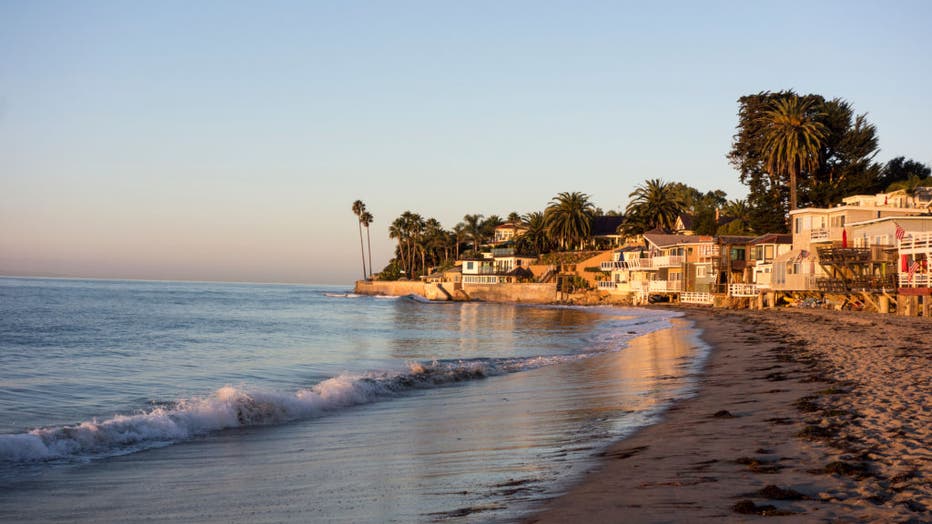Global Warming Is Influencing the Coastal Real Estate Market Worldwide; How Climate Change Is Challenging The Luxury Real Estate?
Climate change is rewriting the rules of construction and safety for luxury real estate, challenging the presumption that wealth provides immunity from nature's forces. Take the case of The Redhill Peninsula, once an enclave of serene luxury in the bustling metropolis of Hong Kong, which has recently become a stark illustration of the vulnerability of coveted real estate in the face of climate change. This upscale neighbourhood, known for its cliffside mansions and uninterrupted views of the South China Sea, was considered a haven for the rich and famous. However, a catastrophic storm on September 8, bringing record-breaking rainfall and unprecedented flooding, shattered the illusion of invincibility. The disaster is indicative that even the most meticulously designed and expensive homes are not immune to the effects of climate change.

Climate Change And Luxury Real Estate
Similar to the polarized state of contemporary politics, there exists a significant disparity in viewpoints between scientists and real estate professionals regarding the impact of global warming on the $1 trillion coastal real estate sector.
While the climate presents numerous perplexing variables, there is also a notable optimism surrounding the favorability of opulent seaside residences among affluent buyers.
However, things are changing; take the example of The Redhill Peninsula, an enclave of wealthy homes in Hong Kong that once exemplified luxury living, offering a serene respite in the midst of a bustling metropolis.
Its exclusive cliffside location, overlooking the South China Sea, seemed impregnable to the chaos of urban life, and for the affluent tycoons, expatriates, and celebrities who called it home, this enclave was the epitome of tranquillity and status.

However, on September 8, everything changed. Hong Kong experienced its most extensive rainfall in nearly 140 years, with a devastating storm that resulted in unprecedented flooding, injuries, and fatalities.
The calamity reached even the seemingly secure Redhill Peninsula, where torrential rains triggered soil erosion, placing three million-dollar homes on the brink of peril and necessitating an evacuation.
This catastrophe is indicative that climate change is rewriting the rules of “safe” construction, challenging the presumption that the most exquisitely designed and expensive homes are immune to nature’s wrath.

How The Wealthy Manipulate Rules
Amid this crisis, authorities are investigating whether some of these properties violated building codes, thus potentially aggravating the situation.
The scrutiny has led to discussions about whether the wealthy have a different set of rules when it comes to construction standards, further highlighting the inequality embedded in this issue.
Regardless of building code violations, climate change poses a growing threat to all, irrespective of wealth or privilege. As extreme weather events become more frequent and severe, both the rich and the less fortunate will bear the consequences. While the affluent may have more resources to recover from disasters, they are not immune to the impacts of climate change.

Demand For Water Front Properties, The Ultimate In Luxury
Currently, the demand for waterfront properties offering breathtaking vistas of the Gulf, Atlantic, or Pacific Oceans outweighs apprehensions regarding flooding and beach erosion among prospective buyers.
Real estate agents specializing in coastal properties have consistently affirmed that rising sea levels have not substantially affected property values; hence, lenders and insurers have made minimal adjustments to contractual valuation parameters to accommodate potential climate-related challenges.
Many industry experts contend that the concerns about coastal vulnerabilities are somewhat exaggerated, and discussions concerning early “warning” signals primarily revolve around interim measures implemented by government agencies such as FEMA, the U.S. Geological Survey, the National Weather Service, and the U.S. Army Corps of Engineers are over the top.
However, numerous unanswered questions concern the appropriate course of action and the timeline for climate change to impact shoreline properties significantly.
A Lavish Home by the Seashore?
Experts assert that if current sea level trends persist, home prices and mortgage debts in flood-prone zones could surge, thereby affecting the value of prime coastal properties unless carbon emissions are curbed.
Scientists have projected that by 2050, many coastal communities may transition from luxurious assets to precarious ones due to the effects of climate change.
The pivotal question is whether the situation will deteriorate gradually over the lifespan of a “typical” mortgage or if climate change will expedite the process, ushering in hurricanes and floods that trigger irreversible changes in the market.
In the latter scenario, everyone is impacted: current homeowners, buyers, sellers, investors, and taxpayers, thereby affecting not only the real estate sector but the broader economy as well.

United States Statistics
According to the National Oceanic and Atmospheric Administration (NOAA), nearly 40 per cent of the U.S. population resides along continental coastlines, often in homes located perilously close to sea level.
However, data from realtor.com indicates that the coastal housing market continues to thrive, with limited consideration for the hazards posed by climate change and properties exposed to rising sea levels are appreciating in value comparably to inland properties and remain in high demand despite potential risks.
Oceanfront Views Translates To Being Submerged
The pertinent question is whether the real estate industry is catering to oblivious buyers who are disregarding the consequences of climate change or if these risks are being proactively addressed.
Recent scientific projections suggest an escalation in “extreme” weather events like floods and hurricanes, coupled with a gradual rise in sea levels in the decades to come.
Climate Change Is Yet To Happen
However, numerous industry sources argue that climate change has yet to exert a tangible impact on the coastal real estate market. Reports reveal that waterfront properties are increasing in value because agents and affluent buyers are now factoring in risks alongside return on investment (ROI).
Most affluent buyers are opting for outright purchases instead of financing mortgages, coupled with rigorous elevation assessments to identify safer locations.
The recent National Ocean Service Sea Level Rise Technical Report highlights that 2018-2022 were the warmest years on record and emphasizes the potential substantial impacts of global warming trends on cities, ecosystems, and economies along the nation’s coastlines.
According to the IPCC Climate Change Impacts Report, NOAA Administrator Richard Spinrad stressed findings indicating that sea levels could rise up to 12 inches globally along the U.S. East Coast and Gulf Coast, and the NOAA report highlights that global sea levels reached a new high in 2020, nearly four inches above 1993 levels.
The Federal Climate Report revealed that sea levels have risen eight inches since 1900, and current models project a rise of three to seven inches by 2030, possibly reaching 4.3 feet by 2100.
A study by the Union of Concerned Scientists estimated that over $1 trillion in waterfront property is at risk, with 300,000 homes vulnerable to flooding, amounting to nearly $135 billion in damages, necessitating the rebuilding or relocation of 280,000 coastal homeowners.
Will these figures, if realized, give buyers cause for concern?
Predicting the future is a formidable task. However, if these consequences do materialize, costs associated with waterfront homes, protective measures, valuations, and broader economic factors will contain higher insurance premiums and property taxes.
Investors will need to account for speculative costs associated with climate change in their predictive models, and therefore, the process may become even more intricate.

The Redhill Peninsula
Returning to Redhill Peninsula, Hong Kong has a history of typhoons and heavy rainfall; thus, its architectural standards have evolved to address these challenges.
However, experts now suggest that these standards may no longer suffice in the face of the changing climate.
The Redhill Peninsula, once an icon of luxury, is now grappling with uncertainty; the properties here, often compared to Malibu’s allure, feature Mediterranean-style architecture and panoramic views of Tai Tam Cove, offering a lifestyle that comes with a hefty price tag. Yet, the recent storm has cast a shadow over property values, making this a sensitive topic within the community.
While heavy rain is common in Hong Kong, recent weather patterns have unsettled residents, with two consecutive typhoons striking the region within a short span, and scientists warn that climate change will lead to more frequent extreme weather events, urging Hong Kong to reconsider its strategies for mitigating rainfall-related risks.
Architects and civil engineers advocate for a review of decades-old standards for hillside buildings, including luxury mansions, to ensure they are resilient in the face of climate-induced challenges. Despite past efforts to fortify slopes against landslides and floods, some experts believe that existing regulations may no longer be sufficient.
One concern is that some low-rise houses in Hong Kong still have shallow foundations, which could prove vulnerable in extreme rain scenarios, leading to potential landslides.
/cloudfront-us-east-1.images.arcpublishing.com/gray/EVXN7QJVUBDHHAUST6RYSWLCMQ.jpg)
Time For Adapting
With climate change making extreme weather more unpredictable, safety standards must adapt accordingly.
In the case of the Redhill Peninsula, authorities suspect that unauthorized modifications, including basements, a swimming pool, and a three-story extension, may have played a role in the disaster.
However, this issue of illegal alterations is contentious in a city where the wealthy have sometimes flouted building codes without repercussions, and the government has promised to investigate and prosecute those responsible for such violations.
Demand for Waterfront Residences
Will oceanfront property values decline, causing beachfront homes to depreciate in worth? Will apprehensions regarding climate change deter potential buyers from the coastal property market?
According to data from the National Association of Realtors (NAR), the answer is “no.”
The NAR asserts that coastal properties susceptible to inundation remain highly sought after, and the acknowledgement of climate change is not deterring prospective homebuyers and the NAR goes on to report that there has been “no decline in sales,” and “coastal real estate prices have outpaced those of inland counterparts.”
A Redfin report revealed that during the first quarter of 2022, a coastal property in a high-risk flooding area sold for $475,000, marking a 14 per cent increase from the same period in the preceding year, with waterfront properties selling within days of being listed.
However, at the same time, Redfin also discovered that the top ten desirable places to live were all located in Florida, with Miami, a city perched precariously close to sea level, emerging as the crown jewel.

Nearly three-quarters of surveyed real estate agents admitted they anticipate minimal impact on waterfront markets over the next decade; therefore, it seems that, despite the scientific warnings, real estate agents and buyers alike maintain a positive outlook on the coastal real estate market, with sales figures serving as compelling evidence.
The Last Bit, The aftermath of the Redhill disaster has stressed the need for Hong Kong to reassess its approach to climate change and building standards.
While the city has a history of adapting to its environmental challenges, the evolving climate demands a fresh perspective on construction regulations, with both the safety and resilience of luxurious and modest homes alike hanging in the balance as climate change continues to reshape our world.
Similarly, as extreme weather events become more frequent and severe, the concept of “safe” construction is evolving, transcending economic boundaries.
The old rules may no longer suffice in the face of a changing climate, demanding a reevaluation of building standards and regulations; whether one resides in opulent mansions or more modest homes, the impacts of climate change are an indiscriminate force.




